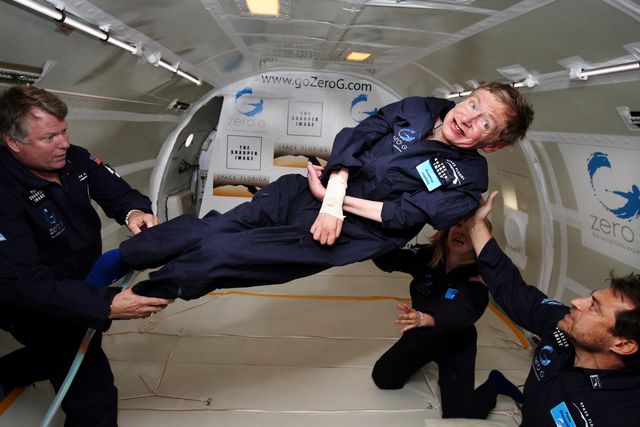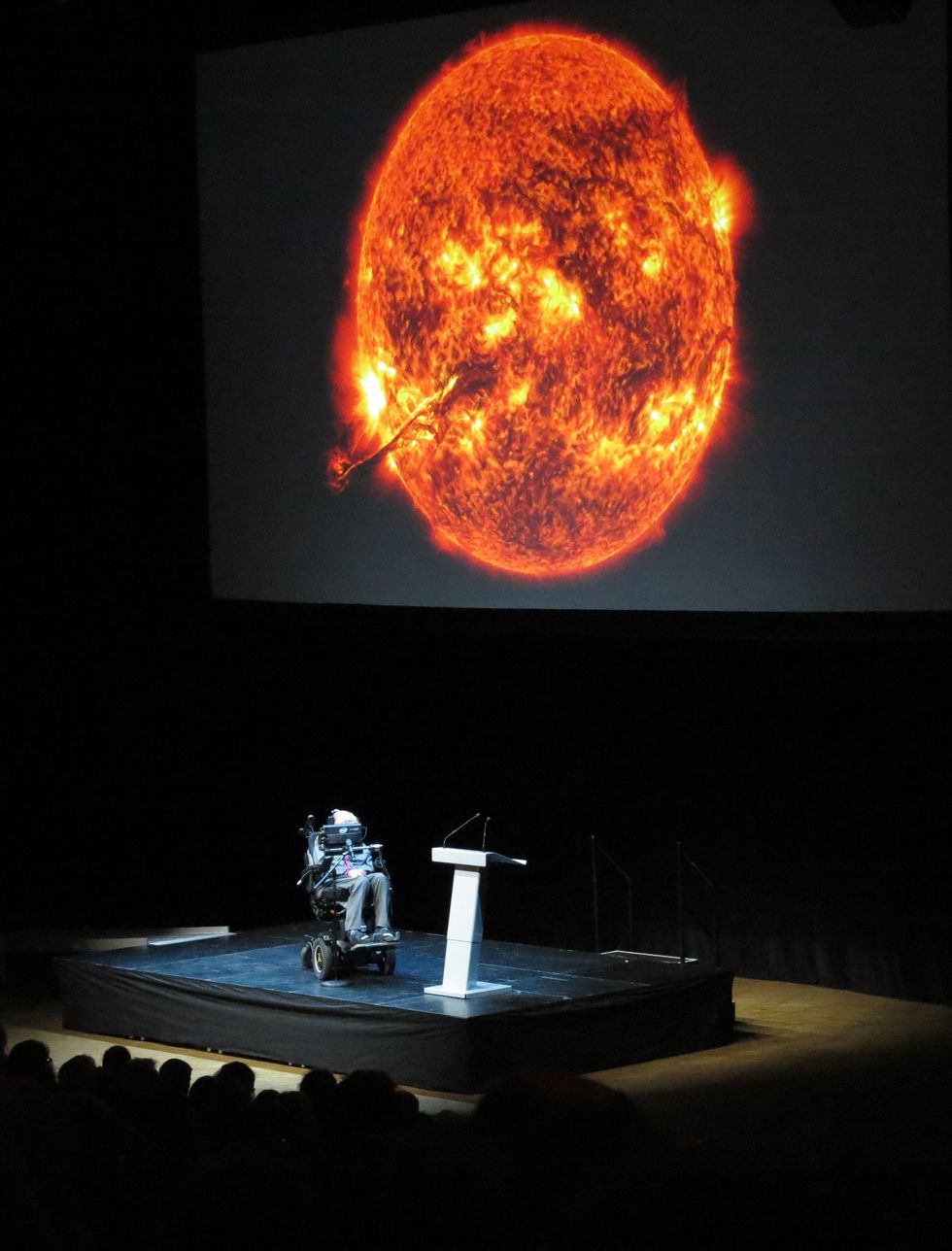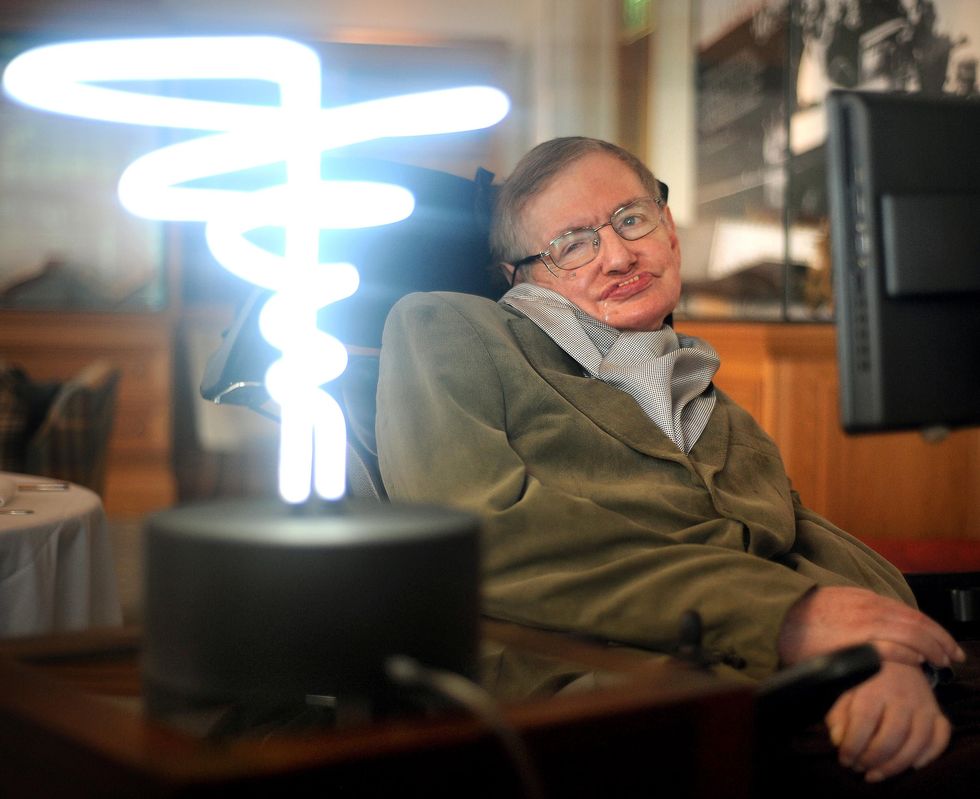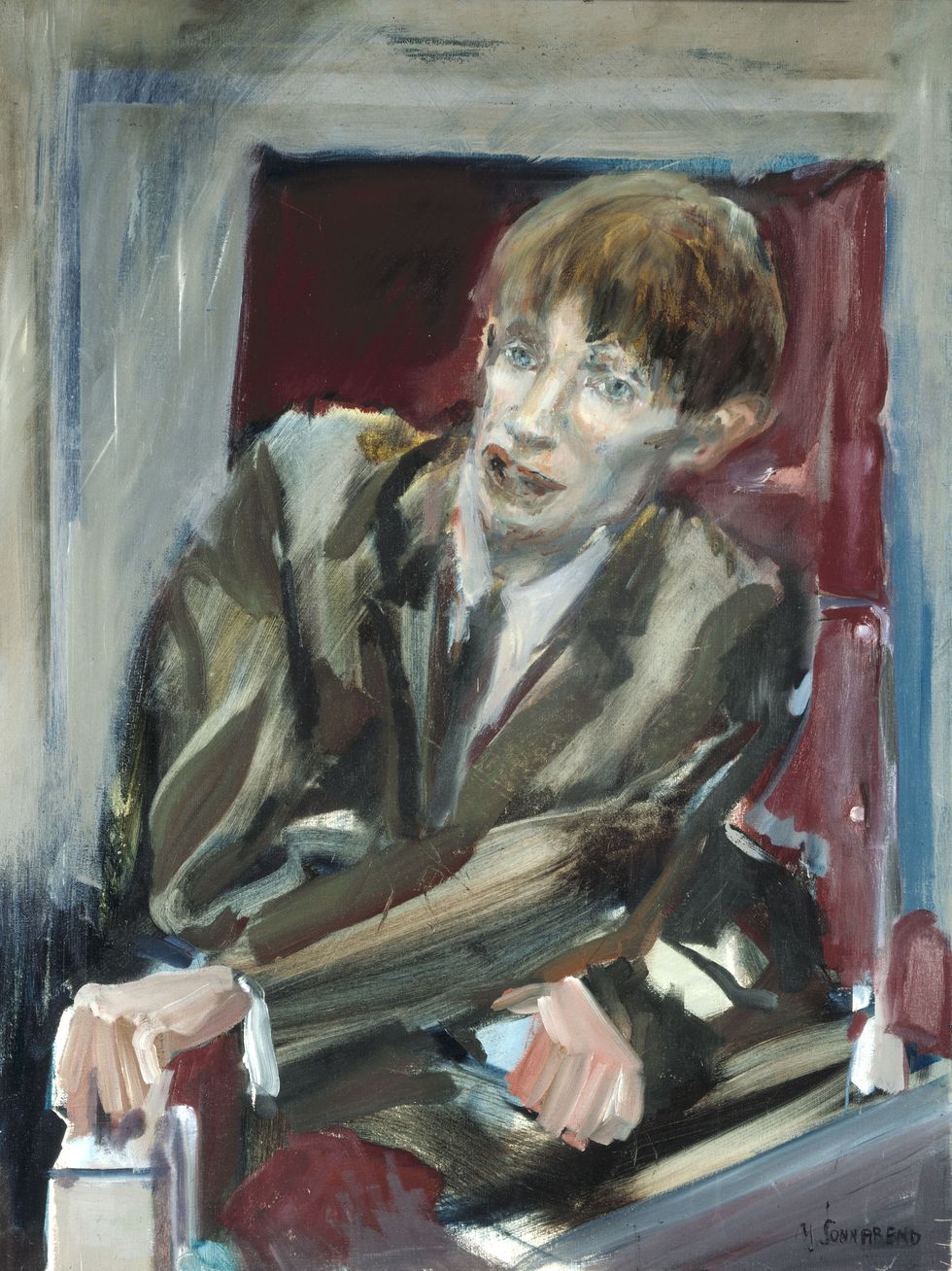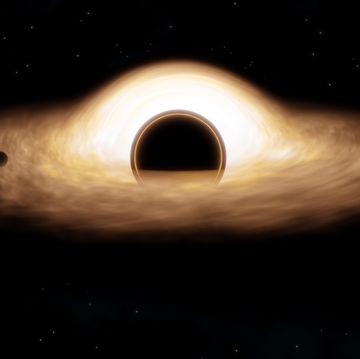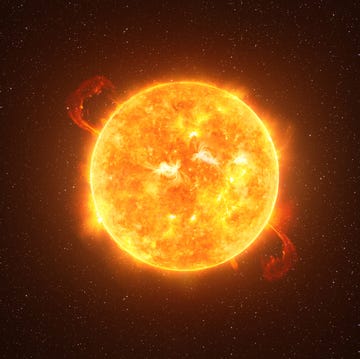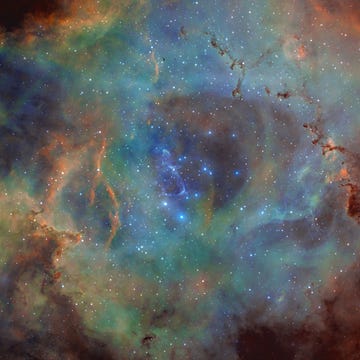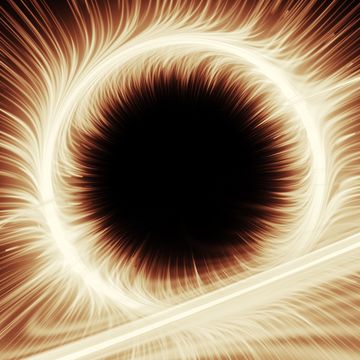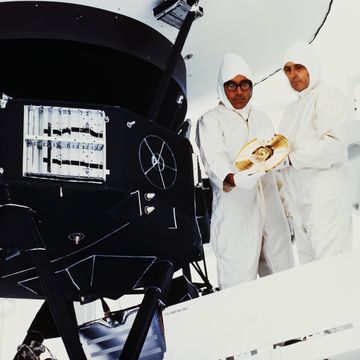"It is a sad day for the world of physics and humanity."
So says Avi Loeb, theoretical physicist, astronomer, cosmologist, and chair of the Department of Astronomy at Harvard, of the passing of Stephen Hawking earlier today. In April 2016, Loeb hosted Hawking at his home in Lexington, MA, to share a meal in celebration of Passover.
"Following this dinner, my twelve year old daughter, Lotem, prepared a special presentation to her class at school about Hawking's life story of science and optimism," Loeb tells Popular Mechanics. "His unique journey despite all difficulties serves as an inspiration for many kids to study science."
Stephen Hawking was born on January 8, 1942, 300 years to the day after the death of Galileo Galilei—a coincidence of planetary alignment that Hawking was fond of pointing out. He died on March 14, 2018, 139 years to the day after the birth of Albert Einstein, the scientist Hawking is most often compared to. He was 76 years old.
The Titan of Science
Stephen Hawking's life and work represent monumental chapters in the quest for a complete mathematical understanding of the cosmos and humanity's place within. In his pursuit of a final theory—a set of equations that hold true for all aspects of the cosmos, from the ultra-dense beginnings of the Big Bang, to the minutiae of atomic behavior, to the ever expanding and accelerating universe—Hawking set out to reconcile the discrepancies of the two leading theories in physics: general relativity and quantum mechanics.
"He dove into the chasm between quantum theory and general relativity and came back with a pearl," says Adam Riess, Nobel Laureate in Physics for his work providing evidence of accelerated universal expansion and a Bloomberg Distinguished Professor of astronomy and physics at Johns Hopkins University.
That "pearl" is Hawking's calculations that black holes, previously thought to be so dense that nothing at all could escape, will actually fizzle out over time, emitting particles out into space, and eventually explode. A black hole, as theorized by general relativity, is a point in space-time that is so dense that the fabric of the universe wraps around it, collapsing into a singularity of infinite density where the laws of physics collapse as well. Hawking's theory, published in the 1974 paper "Black hole explosions?" revealed that, due to quantum mechanics, particles can in fact escape a black hole.
"The great advances in science generally involve discovering a link between phenomena that seemed hitherto conceptually unconnected: for instance, Isaac Newton famously realized that the force making an apple fall was the same as the force that held the moon and planets in their orbits," Martin Rees, Astronomer Royal of England and former president of the Royal Society, writes in an appreciation of Hawking he sent to Popular Mechanics. "Stephen's 'eureka moment' revealed a profound and unexpected link between gravity and quantum theory: he predicted that black holes would not be completely black, but would radiate in a characteristic way."
The discovery of Hawking radiation, as it is now known, provided evidence that these black holes are not so absolute as they seem, interacting with the rest of the universe by releasing particles. Even the famed physicist himself was startled by the implications of his calculations. "I wasn't looking for them at all," he said in a 1978 interview. "I merely tripped over them. I was rather annoyed."
The black hole radiation that Hawking tripped over transformed the study of physics. "I remember learning about Hawking radiation while taking classes in undergraduate astronomy," says Devin Chu, an astronomy graduate student at UCLA. "At the time I didn't have any plans to study environments around black holes, and as I continued my studies in the field, I began to realize more about his contributions."
Chu is now leading a project to observe a star as it passes very close to the black hole at the center of the Milky Way galaxy to determine if the gravitational influence on the star matches the theory of relativity. "To this day, I think I can still do a better job appreciating the crucial work he did for black hole astrophysics," Chu says of Hawking.
The Teacher
Stephen Hawking's contributions to astrophysics are matched only by his conviction that science should not be confined to the desks of learned professors, but that an understanding of the true nature of the cosmos belongs to all. "Through his commentaries, his books, and his talks, his contagious enthusiasm has stimulated many minds around the world," says Charles Bennett, Bloomberg Distinguished Professor of cosmology and astrophysics at Johns Hopkins University who worked to map the Cosmic Microwave Background for the first time.
Hawking became one of the most beloved and passionate champions of scientific literacy with his 1988 publication of A Brief History of Time: From the Big Bang to Black Holes. In his landmark book of popular science, Hawking concludes:
If we do discover a complete theory, it should in time be understandable in broad principle by everyone, not just a few scientists. Then we shall all, philosophers, scientists, and just ordinary people, be able to take part in the discussion of the question of why it is that we and the universe exist. If we find the answer to that, it would be the ultimate triumph of human reason - for then we would know the mind of God.
It may be that Stephen Hawking's universal view of science was strengthened by his battle with amyotrophic lateral sclerosis, or ALS, also known as Lou Gehrig's disease. Hawking was diagnosed with the degenerative neuromuscular disease in 1963, while still a graduate student at Cambridge, and the young physicist was told he only had two or three years to live.
Still in his early 20s, Hawking fell into a deep depression, even dreaming of his own execution. At first, he could find little reason to continue his work in astrophysics and cosmology. However, the disease progressed more slowly than doctors predicted, and though Hawking steadily lost his motor skills and then his ability to speak, he would go on to live for another five and a half decades. In time, Hawking found renewed inspiration for his work.
"Stephen embodied the superiority of mind over matter," says Loeb. "He demonstrated that the human spirit can overcome all physical limitations and that the human mind can comprehend the deepest secrets of nature. With his optimistic mindset, he discovered that even a black hole can shine brightly."
Without the ability to write down the long strings of equations that are fundamental to an astrophysicist's work, Hawking engaged in a form of mental calculation that truly revealed the scale of his genius. He studied pictures and diagrams and adopted a geometric method of engaging with astronomical study.
"I think he deeply affected all of us working in astrophysics and cosmology through his original, out-of-the-box approach to problems," says Jack Burns, an astrophysics professor at the University of Colorado. "He is often compared to Einstein in this regard."
While working on his theory of black hole radiation, Hawking's friends turned the pages of quantum theory textbooks for him. The physicist poured over the books for months. Some wondered if he had taken on a challenge he could not rise to.
Hawking's mental calculation of blackbody radiation leaking out of black holes is one of the most profound examples of the triumphs of the human mind, capable of complex understanding through will and creativity. "People have the mistaken impression that mathematics is just equations," Hawking said of his work. "In fact, equations are just the boring part of mathematics."
Succeeding without the luxuries of the able bodied was perhaps the inspiration for Hawking to turn his attention to outlining cosmology for the masses. From his chair, Stephen Hawking could probe the boundaries of black holes light-years away. There should be nothing preventing the entire world from conceptualizing the laws of physics that govern the universe around us.
"His ability to explain some of the deepest mysteries of modern physics in simple terms was indeed a great gift he had," says Hilton Lewis, director of the W. M. Keck Observatory. "But more importantly, his determination not just to survive his debilitating illness, but to thrive and make some of the most important discoveries of modern physics, serves as an inspiration to all people everywhere. It's a message that the human spirit can triumph over physical infirmity. Stephen Hawking's spirit is truly indomitable."
The Legacy
Like all great minds, from Aristotle to Shakespeare, Stephen Hawking has attained a kind of immortality of thought. He may have passed away, but his ideas live on, as much a part of him as the body he inhabited—indeed, in Hawking's case, maybe more so.
"Of course I was saddened by the passing of such a brilliant mind but, I thought, now he is somewhere in the universe continuing his search for fundamental knowledge," says Charles Elachi, professor emeritus of planetary science at Caltech and the director of NASA's Jet Propulsion Laboratory from 2001 to 2016.
In addition to the significance of his work, the life of Stephen Hawking provides a spark of inspiration to all who face adversity on the path to understanding and knowledge.
"Who can succumb to any of our challenges when we see they are trivial compared to what Stephen overcame?" asks Riess.
His influence was not tamped in the slightest by his physical infirmity. On the contrary, when Stephen Hawking lost his ability to speak quickly, the world paused to listen.

Jay Bennett is the associate editor of PopularMechanics.com. He has also written for Smithsonian, Popular Science and Outside Magazine.
